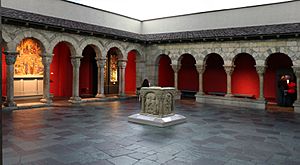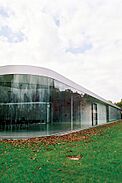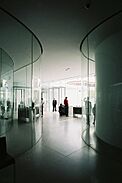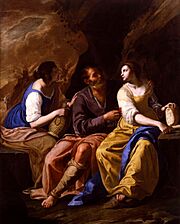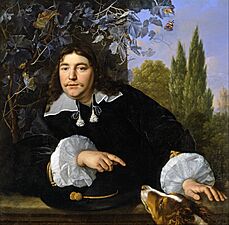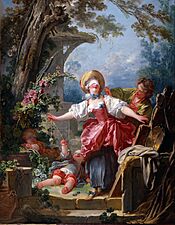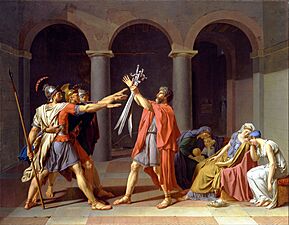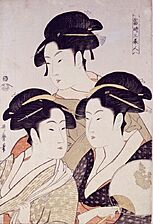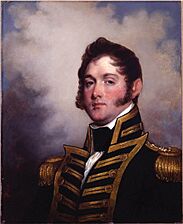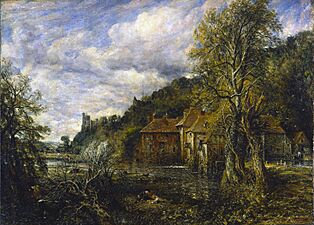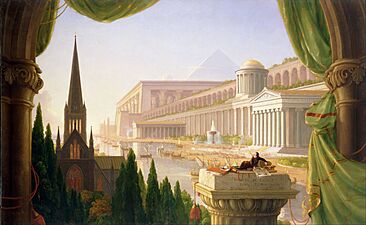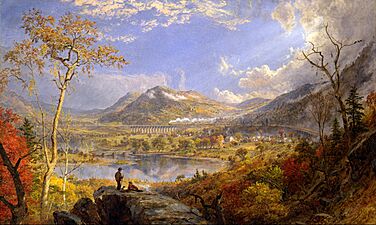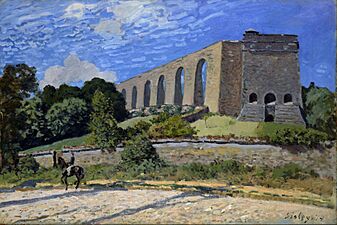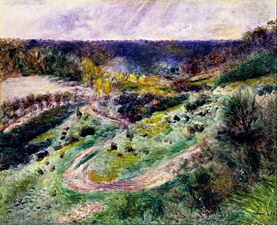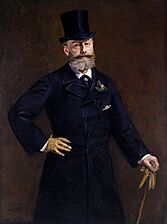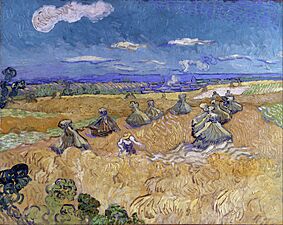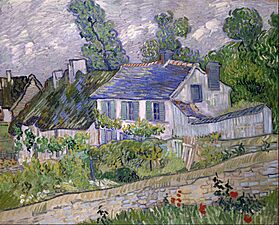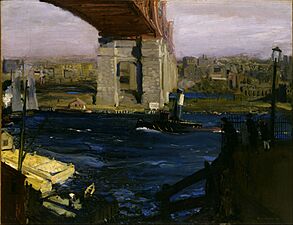Toledo Museum of Art facts for kids
 |
|
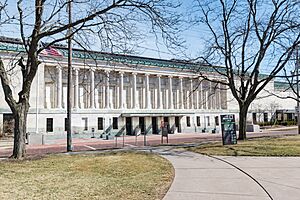
Toledo Museum of Art exterior
|
|
| Established | 1901 |
|---|---|
| Location | 2445 Monroe Street Toledo, Ohio |
| Accreditation | American Alliance of Museums |
| Visitors | 383,685 (2019) |
| Public transit access | |
The Toledo Museum of Art is a famous art museum located in Toledo, Ohio. It has a huge collection of over 30,000 art pieces. The museum covers a large area with 45 galleries. It is currently making big plans to expand its campus.
The museum was started in 1901 by Edward Drummond Libbey, a glassmaker from Toledo. It moved to its current building in 1912. This building was designed in a Greek Revival style. Over the years, more buildings were added, including new ones in the 1990s and 2006. The main building has lots of space, including classrooms, a large concert hall, a lecture hall, a café, and a gift shop. About 380,000 people visit the museum each year. In 2010, it was even voted America's favorite museum by a visual arts website. The current director of the museum is Adam M. Levine.
Contents
Amazing Art Collections
The Toledo Museum of Art has many important collections. It is especially known for its glass art. It also has a great collection of European and American art from the 1800s and 1900s.
You can also find smaller, but very special, collections of Renaissance, Greek, Roman, and Japanese art. Some famous artworks you might see include The Crowning of Saint Catherine by Peter Paul Rubens. There's also Blind Man's Bluff by Fragonard. You can even see Houses at Auvers by Vincent van Gogh. The museum also has works by artists like Rembrandt, El Greco, Willem de Kooning, and Henry Moore.
The Peristyle Concert Hall
The Peristyle is a large concert hall inside the museum. It can seat 1,750 people. This hall is the main place where the Toledo Symphony Orchestra performs. It also hosts the museum's special Masters series of concerts.
The Peristyle was added in 1933. It was designed to look like a classical Greek building, matching the outside of the museum. The seats are arranged in a half-circle, much like an ancient Greek theater. At the back of the seating area, there are 28 tall Ionic columns. These columns give the concert hall its name, "Peristyle."
In 2001, a sculpture garden was added. It features mostly modern sculptures. You can find it along the museum's Monroe Street side. Older sculptures are displayed inside the museum.
Visual Arts Center and Glass Pavilion
In the 1990s, the museum added a Center for the Visual Arts. This building was designed by the famous architect Frank Gehry. It holds the museum's library. It also has studios, offices, and classrooms for the art department of the University of Toledo.
In 2000, the museum chose the architecture firm SANAA to design a new building. This building would be home to the museum's amazing glass collection. It was SANAA's first project in the United States. The Glass Pavilion cost $30 million to build. Much of the money came from a huge fundraising effort in Toledo. The building's unique curved glass walls were brought in from China.

The Glass Pavilion opened in August 2006. It quickly received great praise from art critics. It was called "a striking symbol of cultural power." One critic from The New York Times said its elegant curved glass walls were like a modern version of the Hall of Mirrors at Versailles. He also noted how well the new building fit with the older museum buildings.
The Pavilion hosts about 700 public glass blowing shows each year. It also holds community events. These events include "Re)New Year's Days," which combines art with yoga and meditation. Another event, "Art of the Cut," celebrates Black barbers as artists and community leaders.
The building proudly displays the museum's original glass collection. It also features new works, including a large glass sculpture by Dale Chihuly.
Famous Artworks to See
-
Lot and His Daughters by Artemisia Gentileschi, 1635-1638
-
Blind Man's Bluff by Jean-Honoré Fragonard, around 1750
-
Children in a Chariot by Francisco Goya, 1778
-
Copy of Jacques-Louis David's Oath of the Horatii by his student Anne-Louis Girodet de Roussy-Trioson, 1786
-
Three Beauties of the Present Day by Kitagawa Utamaro, 1793
-
Portrait of Commodore Oliver Hazard Perry by Gilbert Stuart, 1818.
-
Arundel Mill and Castle by John Constable, 1837.
-
The Architect's Dream by Thomas Cole, 1840
-
Starrucca Viaduct, Pennsylvania by Jasper Francis Cropsey, 1865
-
The Aqueduct at Marly by Alfred Sisley, 1874
-
Road at Wargemont by Pierre-Auguste Renoir, 1879
-
Portrait of Antonin Proust by Édouard Manet, 1880
-
Wheat Fields with Reaper by Vincent van Gogh, 1888
-
The Bridge, Blackwell's Island by George Bellows, 1909
-
Entrance to the Grand Canal, Venice (Signac) by Paul Signac, 1905
-
Water Lilies by Claude Monet, 1922
See also
 In Spanish: Museo de Arte de Toledo para niños
In Spanish: Museo de Arte de Toledo para niños


